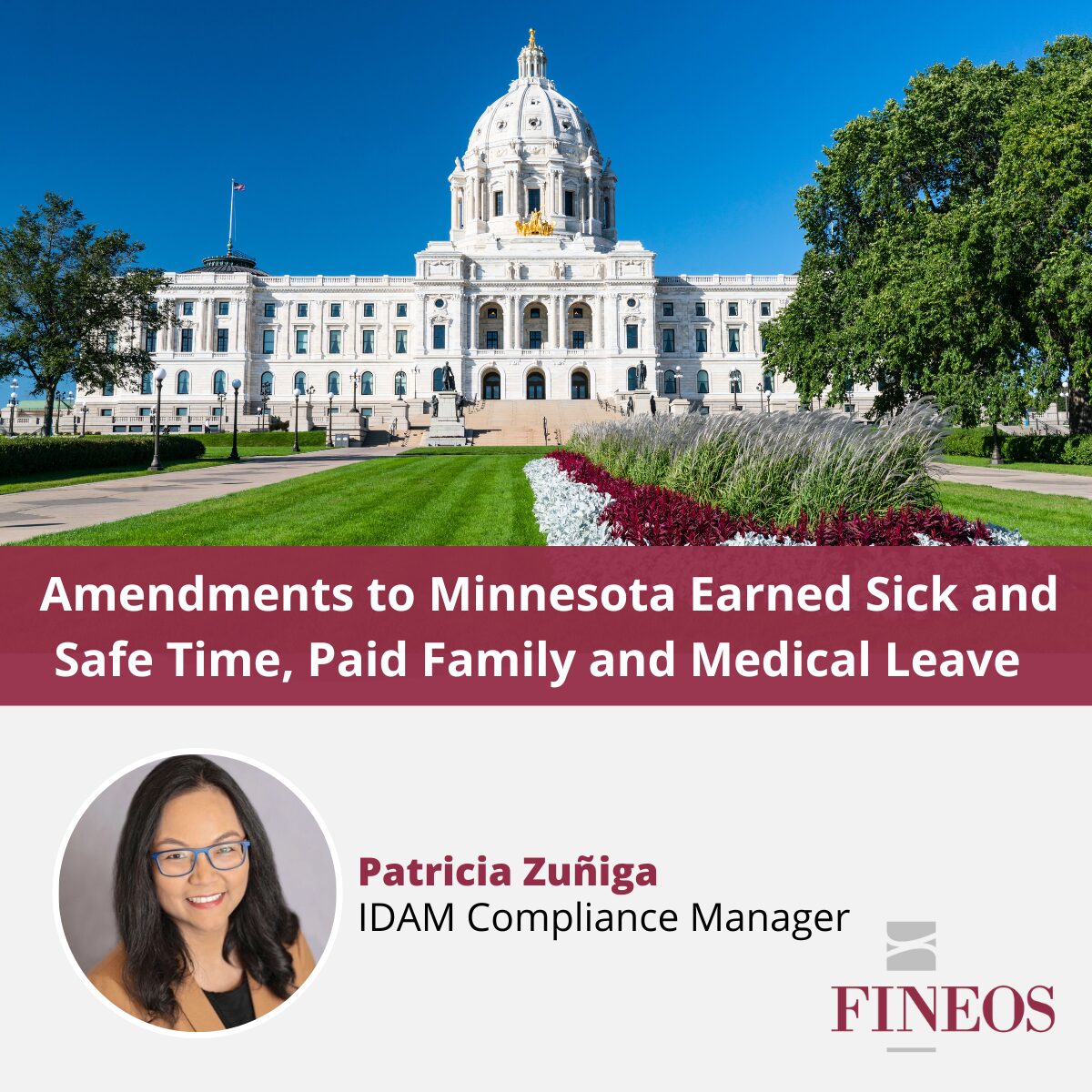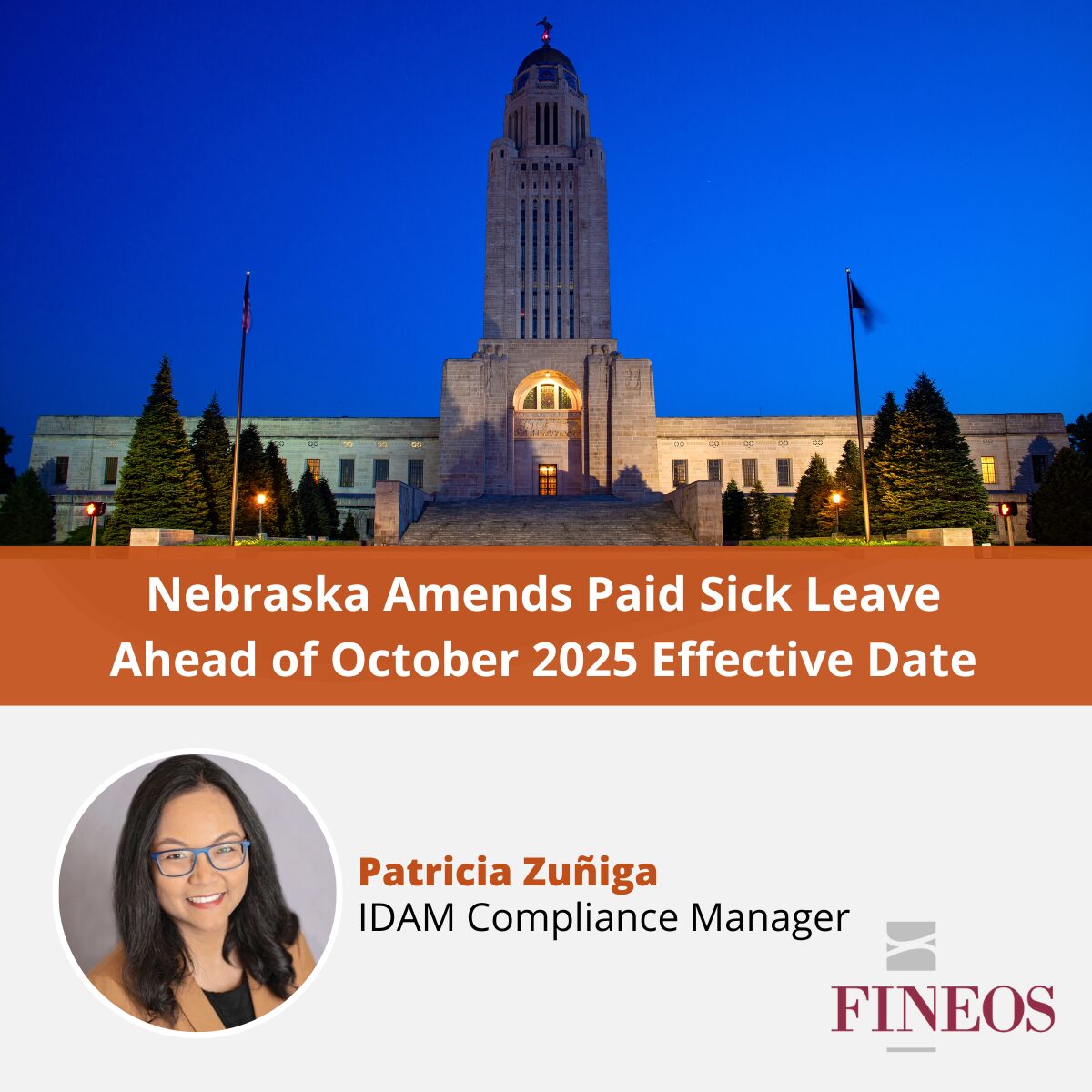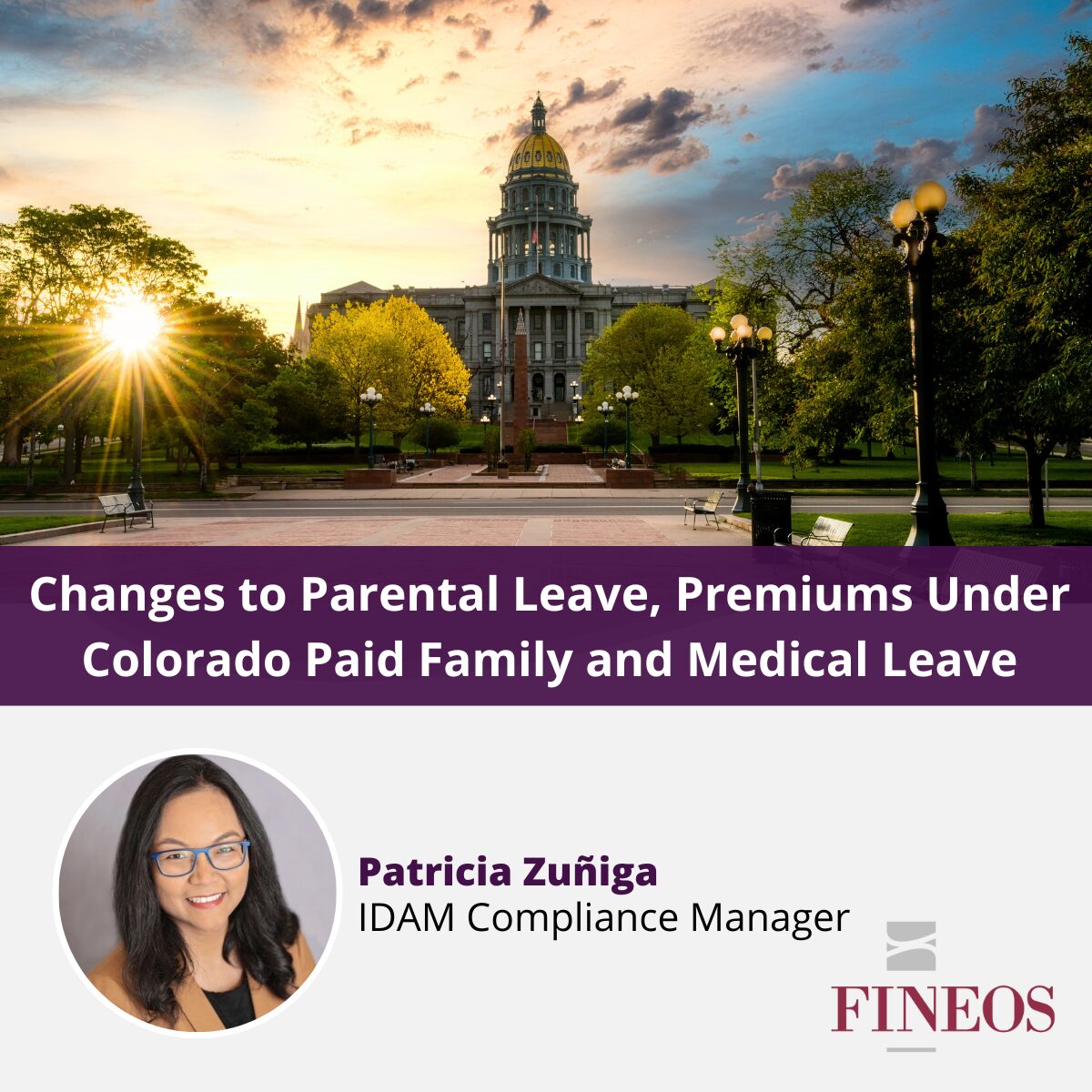Although summer is underway, legislators continue to pass new leave laws. Here, we outline the latest developments in Connecticut and Bloomington, Minnesota.
Connecticut Domestic Violence Law
On May 24, the governor of Connecticut signed Substitute Senate Bill No. 5, enacting a new leave right for victims of domestic violence. The law, effective October 1, 2022, provides that employers must allow employees a reasonable leave of absence to:
- seek attention for injuries caused by domestic violence including for a child who is a victim of domestic violence
- obtain services including safety planning from a domestic violence agency or rape crisis center as a result of domestic violence
- obtain psychological counseling related to an incident of domestic violence, including for a child who is a victim of domestic violence
- take other actions to increase safety from future incidents of domestic violence, including temporary or permanent relocation
- obtain legal services, assisting in the prosecution of the offense, or otherwise participate in legal proceedings in relation to the incident or incidents of domestic violence.
Employers can require that employees absent from work for this reason provide a certification, which can include a police report, court order, medical documentation, or other evidence. Employers must maintain the confidentiality of any information regarding an employee’s status as a victim of domestic violence.
This law joins the existing Connecticut domestic violence law, CT Gen. Stat. Sec 31-51ss, passed in 2010, which provides 12 days of leave for an employee who is a victim of family violence. It appears that these leave entitlements will run concurrently, but since the new law provides a “reasonable leave of absence,” in certain cases it will provide an additional extended right to leave beyond the existing law.
Bloomington (Minn.) Paid Sick and Safe Leave Law
On June 6, the city of Bloomington, Minnesota enacted a paid sick leave ordinance, which goes into effect July 1, 2023. The ordinance contains the following provisions:
Covered Employers: All employers are covered by the ordinance, except for the federal, state, and county government (City government is subject to the ordinance). Employers with five or more employees must provide paid leave, while smaller employers must provide unpaid leave.
Eligible Employees: All employees who perform work at a location or locations within the city for at least eighty (80) hours in a year are covered, except for independent contractors, student interns and certain employees participating in the Minnesota extended employment program for persons with severe disabilities or impairments. Employees can use sick and safe time after 90 calendar days of employment.
Amount of Leave: Employees accrue a minimum of one hour of sick and safe time for every 30 hours worked within the geographic boundaries of the city up to a maximum of 48 hours in a calendar year. An employer can satisfy this requirement by frontloading 48 hours of sick and safe time following the initial 90 of employment for use by the employee during the first calendar year and providing at least 80 hours of sick and safe time beginning each subsequent calendar year.
Leave Reasons: An employee may use accrued sick and safe time for:
- the employee’s or family member’s need for diagnosis, treatment, or preventative medical care, including mental illness and prenatal care
- an absence due to domestic abuse, sexual assault, or stalking of the employee or employee’s family member to:
- seek medical attention or psychological or other counseling services related to physical or psychological injury or disability caused by domestic abuse, sexual assault, or stalking
- obtain services from a victim services organization
- seek relocation due to domestic abuse, sexual assault, or stalking
- seek legal advice or take legal action, including preparing for or participating in any civil or criminal legal proceeding related to or resulting from domestic abuse, sexual assault, or stalking
- the closure of the employee’s place of business by order of a public official to limit exposure to an infectious agent, biological toxin, hazardous material, or other public health emergency
- the employee’s need to care for a family member whose school or place of care has been closed by order of a public official to limit exposure to an infectious agent, biological toxin, hazardous material, or other public health emergency
- the employee’s need to care for a family member whose school or place of care has been closed due to inclement weather, loss of power, loss of heating, loss of water, or other unexpected closure
Covered Family Members include an employee’s child, spouse, sibling, parent, parent-in-law, grandchild, grandparent, guardian, ward, or members of the employee’s household.
Notice: If the need for use is foreseeable, an employer can require advance notice of the intention to use sick and safe time but cannot require more than seven days’ advance notice. If the need is not foreseeable, an employer may require an employee to give notice of the need for sick and safe time as soon as practicable.
Certification: An employer can require reasonable documentation that the sick and safe time covered by the permissible leave reasons for absences of more than three consecutive days, only if the employer provides health insurance benefits to the employee.
Job Protection: An employer cannot take adverse employment action or discriminate against an employee because the employee has exercised rights under the ordinance, including using leave.
How is FINEOS helping carriers and employers prepare for the newly passed laws?
FINEOS will be ready to administer the changes by the effective date of the laws. Using modern insurance technology solutions like the FINEOS Platform can help insurance carriers remain agile and competitive when leave legislation passes. Learn more about how a modern, integrated disability and absence management (IDAM) solution can help your organization adapt to sudden changes and remain in compliance.


